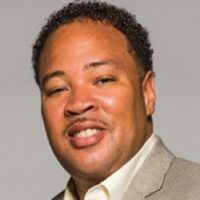In our efforts as leaders to influence new ideas, strategies, change, and/or concepts, often there are countless theories and ideas to choose from. Depending on what you read, who you talk to, or what you listen to, you’re likely to receive myriad suggestions based on any given individual’s past experiences, whether the results were successful outcomes, failures, or perhaps a combination of both. Though there may be value to much of the information received, ultimately the direction you choose will become the sum total of the decisions you ultimately make. Be it good or bad, you must be prepared to live with the outcomes either way or be willing to make the necessary adjustments required to put you back on track towards your stated goals and objectives.
A consultant or program manager implementing safe patient handling (SPH) programs is always tasked with achieving decreased employee injury outcomes and results; hence, this is the intended purpose for pursuing such a challenging undertaking in the first place. Though many of our paths will be different for how we get there, we are all likely to encounter some common terms or “change” language along the way: staff education, training/in-service, roles/functions, and procedures/processes. The questions you will be responsible for answering as the conductor of your program include: Which of these actions apply? Where within the process do the actions fit? When will the actions achieve the intended results?
Injury prevention programs such as SPH require employees to be educated on the reasonings behind why changes in practice or philosophies are necessary. This is especially important when current practice is widely perceived to be working. Education, however, should not be viewed as training or the sole action needed to create an immediate change to practice routines; at a minimum, it represents an important part of influencing the processes you are seeking to change. In SPH programs, a change in practice represents changing from manually lifting and handling patients to using patient-lift technology. Though educating and knowledge sharing is important for arriving at your ultimate goal, education alone isn’t enough to influence caregivers to use patient-lift technology.
Training and in-services as the solution to transitioning new ideas and concepts into actionable processes also won’t ultimately lead you to your desired outcomes and results. Training typically requires a return demonstration or competency in order to deem the trainee capable of performing a task to a standard. In-services, on the other hand, generally serve as informational or reinforcement tools that are applied to either prevent or to address a breakdown in new practices, processes, and/or philosophies. In SPH programs, training consists of staff demonstrating the ability to operate patient-lift equipment properly. Though training is often considered to be necessary for change to happen, training should not be applied before new standards for processes and procedures have been established. Furthermore, in-services should not be confused or viewed as training. However, when appropriately applied, both have the potential to be important contributors to the overall change process.
Roles and functions in the change process are essential but require clarification or explanations before new processes and procedures are created. Roles and functions are often the most difficult or challenging parts of the change process because the change often requires people having to alter their norms (which is usually uncomfortable for most). Explaining to staff newly expected roles and functions must be focused on the specific factors required to create the intended outcome. For SPH programs, this would include not only understanding how to properly operate patient-lift equipment, but also the necessary processes needed to ensure that patient-lift equipment is available in the moments when it’s most likely to make the greatest change-related impact. Intended roles and functions must be specific to not only what is expected of staff, but also the philosophy behind how modifying practice routines eventually leads to successful outcomes.
To successfully implement safe patient handling programs, it would be impractical to advise a specific order for how to go about executing each step, especially given that all clinical cultures are unique. Though there is no exact science for how to go about influencing staff to change their normal practice routines, the right combination of creativity, strategies, and concepts will directly impact how staff receives education, trainings, and inservices, ultimately determining how staff may or may not comply with your program.
Roric P. Hawkins is the founder and president of The RP Hawkins Group (www.therphawkinsgroup.com) and is the safe patient handling and mobility coordinator at Michael E. DeBakey VAMC in Houston, TX. The views expressed here are his own.



















1 Comment.
Roric presented clear ideas throughout the article. Able to understand the difference between in-service and training, functions, and processes to lead the nursing team to successful outcomes.